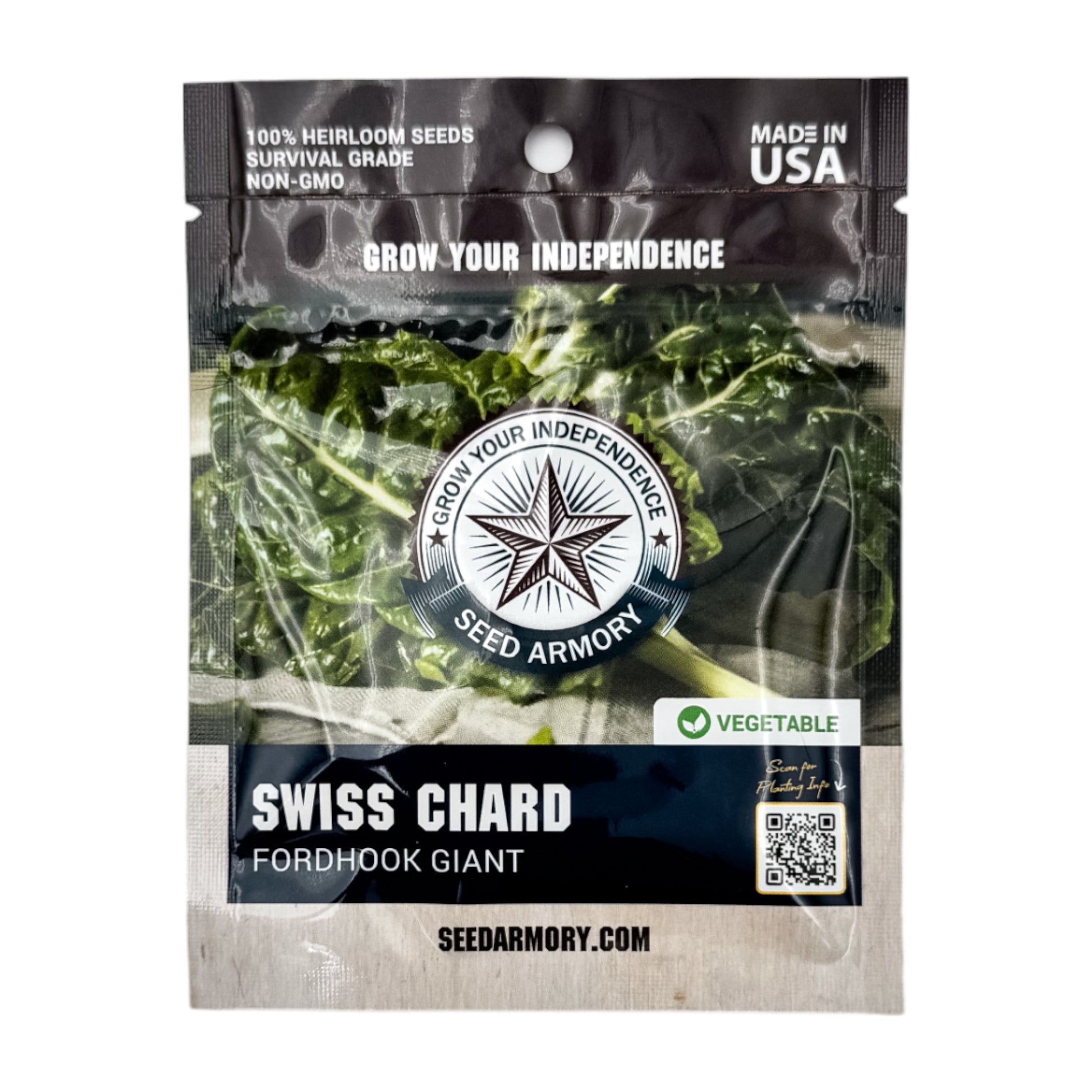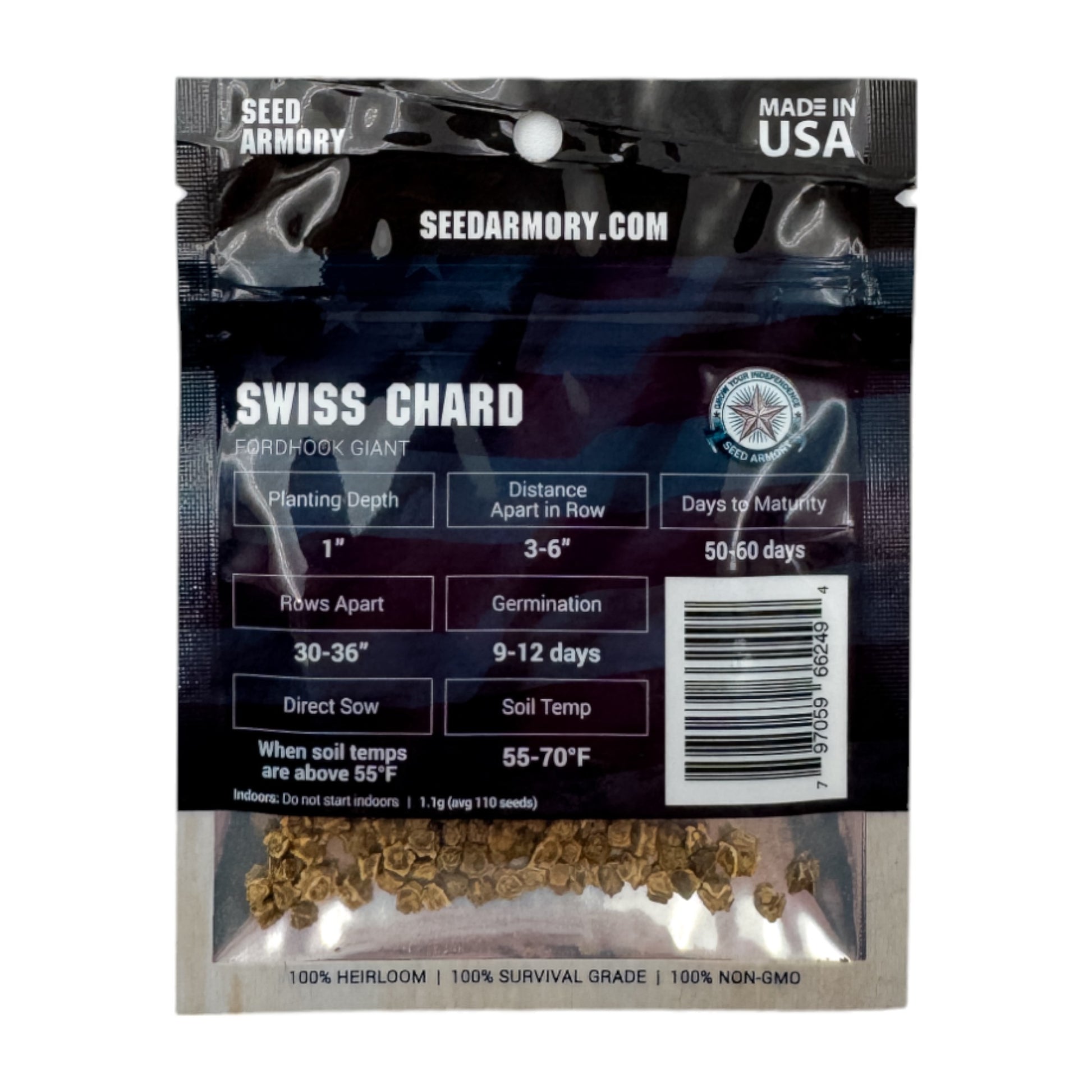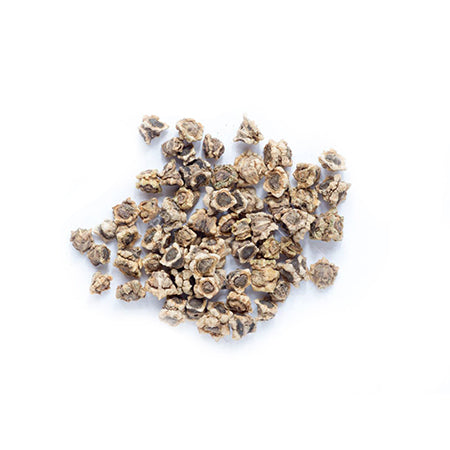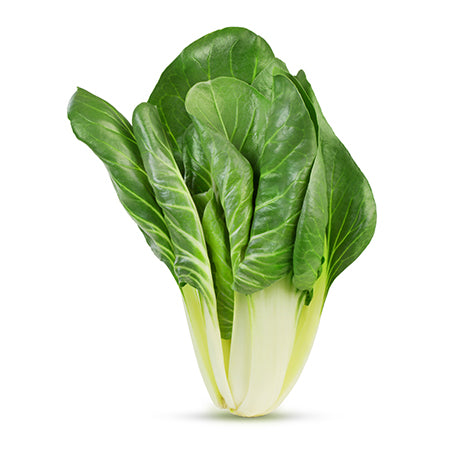- Type: Vegetable Seeds
Swiss Chard Heirloom Seeds - Fordhook Giant
Packed in Resealable Long Life Mylar
Moisture Proof Packets
10+ Year Survival Seed Viability
- Category: Vegetable
- Type: Swiss Chard
- Variety: Fordhook Giant
- Family: Chenopodiaceae
- Botanical Name: Beta vulgaris
- Hardiness Zones: 3,4,5,6,7,8,9,10
- Growing Difficulty: 3
- Soil PH: 6.2 to 7.0
- Fertilizer Requirements: 10-10-10
- Soil Type: Rich, Moist, Well-Draining
- Germination (days): 9 to 12
- Soil Temp for Germination: 55-70°F
- Lighting Conditions: FULL SUN, PART SHADE
- Days to Maturity: 50 - 60
- Planting Depth: 1/2”
- Distance Apart (in row): 6-8”
- Row Spacing: 18 - 24”
Sowing Instructions
DIRECT SOW IN FULL SUN WHEN SOIL TEMPS ARE ABOVE 55°F
Starting Indoors
NOT RECOMMENDED FOR STARTING INDOORS
Growing Tips
When to sow your swiss chard depends on your growing climate. If you’re in a northern climate with a shorter growing season, sow in early spring for a midsummer crop. Gardeners in the south should sow starting in the fall to spring.
Swiss Chard likes loose soil that drains well.
For a constant crop, we recommend successive planting every couple of weeks to increase your harvest time and make sure that you aren’t overloaded with swiss chard all at once.
Culinary Uses
Commonly found in Mediterranean cuisines, swiss chard is a great green that can be used in many ways. Swiss chard is essentially a beet without the root (just the greens).
Use in casserole dishes, with eggs, in soups, as a pizza topping, with pasta or any other way that you would use greens in your diet.
Harvesting Crops
Start harvesting your swiss chard when the plants are around 9-12 inches high. Waiting too long to harvest your swiss chard will result in tougher leaves with less flavor.
You should harvest your leaves from the outside in, to allow the inner leaves more time to mature.
Once all the leaves have been harvested, pull the root and toss it in the compost pile. Removing the harvested plant will allow your remaining (and still developing) plants to claim the leftover nutrients and allow for a summer long harvest.
Harvesting Seed
Swiss Chard is a Biennial plant, which means you will have to wait until the second year to harvest the seeds. Allow the plants that you wish to save for seed to overwinter. Remember that these plants will take quite a bit of garden space when allowed to fully mature and flower.
You can lightly harvest your seed stock plants for their leaves in the first year, just make sure to leave the center leaves to overwinter.
Wait until the plants produce flowers and seed stalks. The flowers and seed pods will turn dry and brown. Harvest these seed pods and allow them to dry for several weeks before hand crushing and gathering the seeds. Store your seeds safely in a cool dry area for use in your next growing season.
Have a question?
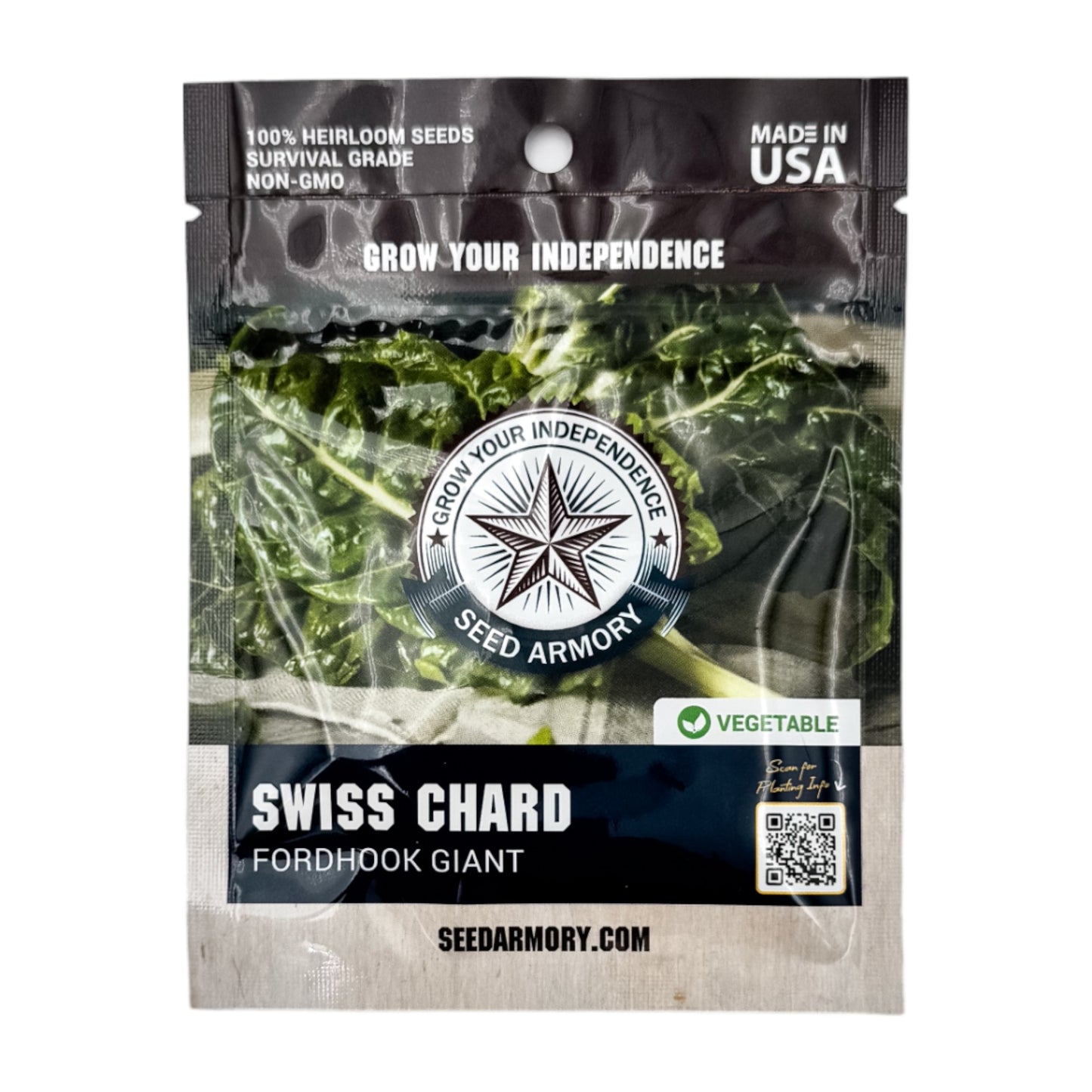
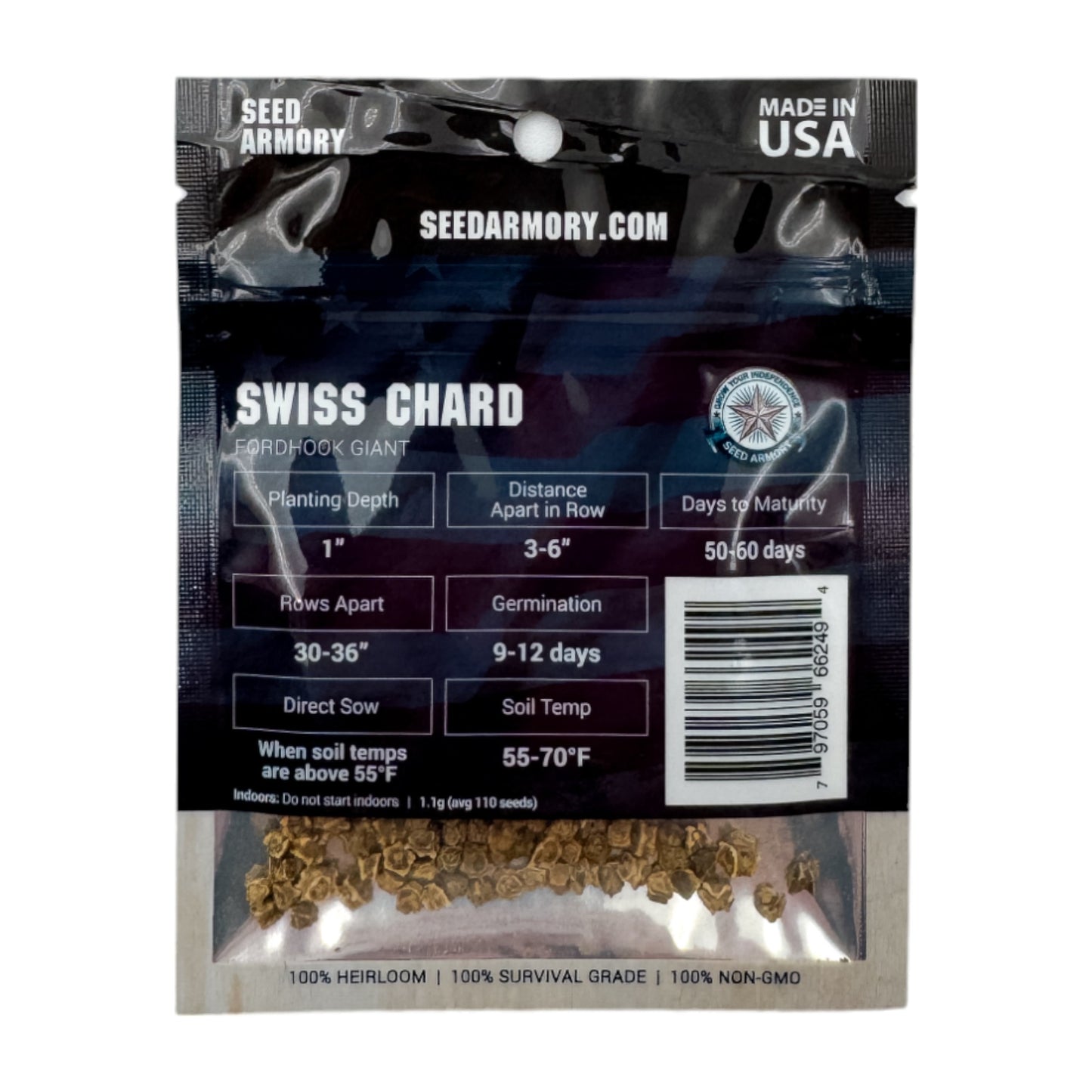
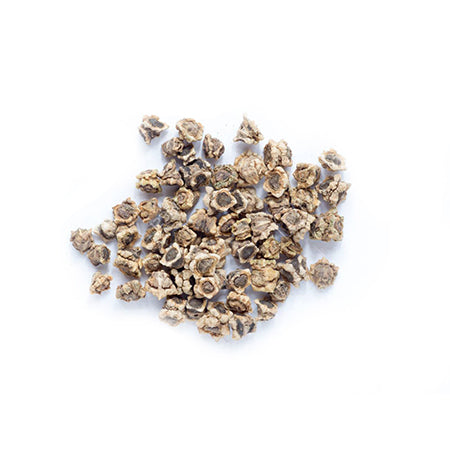
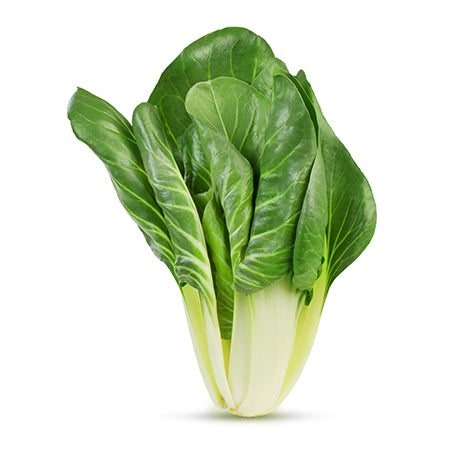
Swiss Chard Heirloom Seeds - Fordhook Giant


